Cultural reserves in Sweden - do you know about them? We recently visited the Lingnåre cultural reserve in Uppland, which was really interesting. During this visit, we became curious about the concept of cultural reserves. What are they? And where are they located?
What are cultural reserves in Sweden?
The concept of a cultural reserve was introduced in 1999 and was intended to mimic the concept of a nature reserve. The introduction of cultural reserves was intended to enable the care and conservation of culturally valuable landscapes. This can include, for example, land, ancient monuments or buildings, but also knowledge and traditions.
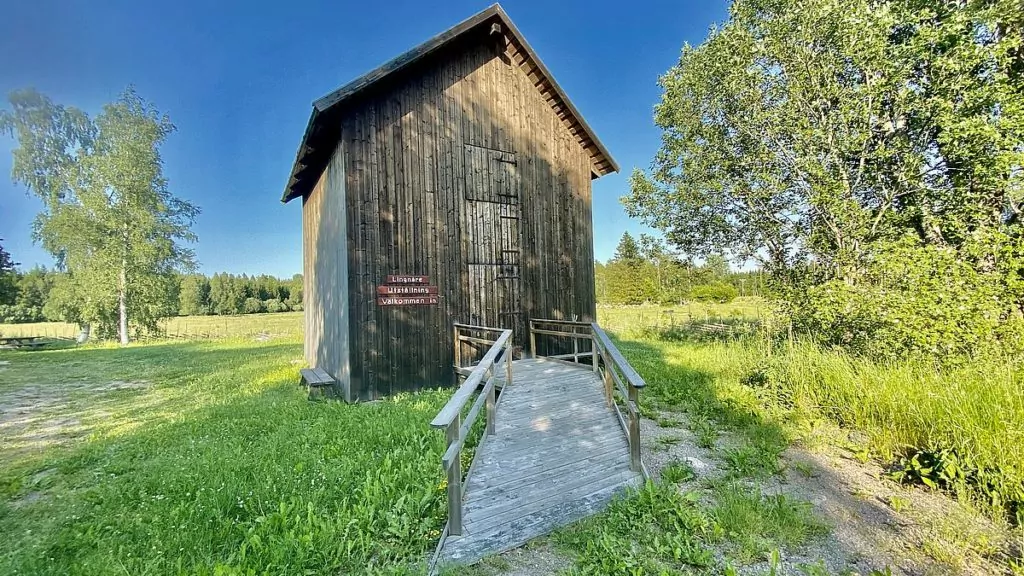
Swedish cultural reserves - from north to south
There are currently a total of 45 cultural reserves in Sweden (Jan 2022), according to the Swedish National Heritage Board. 35 are designated by county councils and 10 by municipalities. Whether the Swedish cultural reserves are worth visiting? We have visited some and it was both interesting and beautiful. Otherwise, we don't know, but we are curious to investigate it a little more carefully. We like culture and history! Maybe you have visited something and have some tips? Here is the whole list:
1. Hanhivittikko mountain hut
- Övertorneå municipality, Norrbotten county, Norrbotten, Sweden
- Farming environment and agricultural landscape
Hanhivittikko Fäbod is a uniquely preserved pastoral environment and agricultural landscape from 1860, located 10 kilometres northwest of Övertorneå.
2. the atrocity
- Storuman, Västerbotten County, Lapland
- Sami reindeer herding environment
The "Atoklimpen" is an oddly shaped mountain, 1006 metres high, 30 kilometres west of Tärnaby, where you can see the Sami reindeer herding environment since prehistoric times, and the mountain is sacred to the Sami.
3rd Gallejaur town
- Municipality of Arvidsjaur, County of Norrbotten, Lapland
- Farm environment and agricultural landscape
Gallejaur village in Arvidsjaur with several unpainted log houses from the 19th century and with a farm environment and agricultural landscape.
4. Rörträsk
- Norsjö municipality, Västerbotten county, Västerbotten province
- Hay meadows with flood irrigation systems
Rörträsk is a village in Rörsjö municipality. Sven Benjaminsson from Böle started building on 23 September 1793 at Lake Rörträsk.
5. Fatomakke church town
- Municipality of Vilhelmina, County of Västerbotten, Lapland
- Church town for Sami and settlers
The church town of Fatmomakke has been a sacred place for Sami people and settlers since the 18th century, and is an exciting Swedish cultural reserve.
6. Sandviken fishing village
- Örnsköldsvik municipality, Västernorrland county, Ångermanland.
- fishing village
Sandviken's fishing village "the fishing village of the curved backs" was built in the 17th century. This is also where the tradition of putting in surströmming comes from.
7. Marieberg sawmill community
- Kramfors municipality, Västernorrland county, Ångermanland.
- Industrial environment (workers' housing)
Marieberg sawmill community completed in 1862 with a steam saw in Bjärtrå.
8. Lögdö mill
- Timrå Municipality, Västernorrland County, Medelpad
- Industrial environment (mill environment)
Lögdö Bruk is a former ironworks from the 18th century. The mill is located on the banks of the Ljustorpsån river with blast furnaces at Masugnsbäcken. Mills and hammers were located by Aspån.
9. Lillhärjåbygget
- Municipality of Härjedalen, County of Jämtland, Härjedalen.
- Farm environment (mountain farm) and agricultural and mountain landscape
Lillhärjåbygget is a mountain farm with herding operations established in 1804.
10. Western meadow
- Hudiksvall municipality, Gävleborg county, Hälsingland.
- Farm environment (hälsingegård) and agricultural landscape
Västeräng is a village with four farms outside of Delsbo and the farms (fäbodarna) Ersk-mickels, Ol-Ers and Schäftners are located together while the fourth, called Bommens, is a little outside.
11. Våsbo mountain huts
- Municipality of Ovanåker, County of Gävleborg, Hälsingland
- Farming environment and agricultural landscape
Four of the valleys (sites) are located north of Lake Våsen, and about a mile north of both Edsbyn and the home village of Roteberg. Very little has changed since 1800.
12. Dysdalen
- Älvdalen municipality, Dalarna county, Dalarna
- Archaeological site with traces of recent bog iron production
With traces of later bog iron production in the 17th and 18th centuries. Blast mills were used in many places in Sweden from about 700 BC and last in commercial operation in 1871.
13. Axmar Mill
- Municipality of Gävle, County of Gävleborg, Gästrikland
- Industrial environment (mill environment)
The new mill was completed in 1672, and for the next hundred years it belonged to the Behm family, or more precisely Brita Behm. Axmar Bruk has its own history with a preserved cabin with two ovens and a park with ruins from the oldest mill in the 1670s.
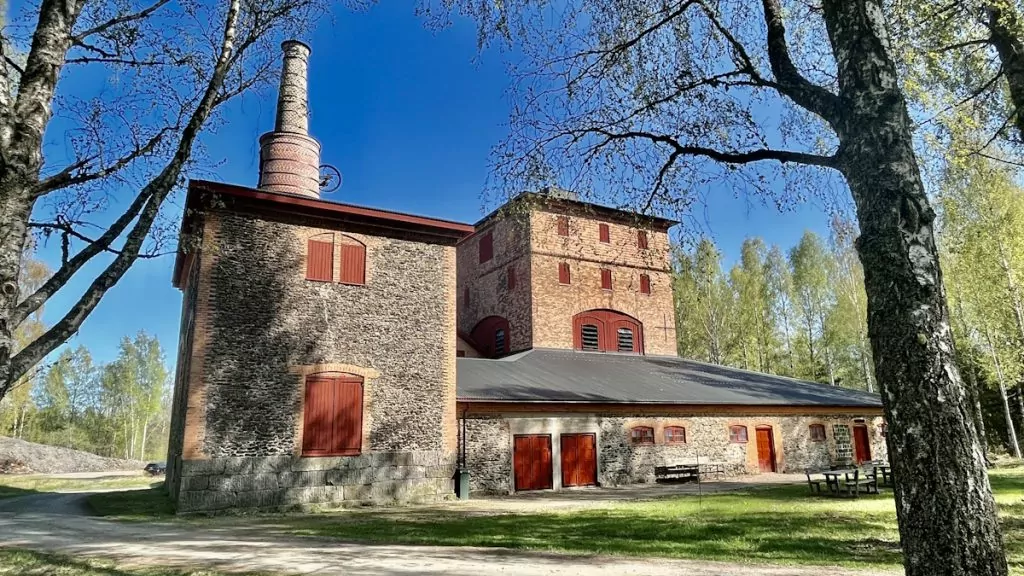
14. The millstone quarry in eastern Utsjö.
- Malungs municipality, Dalarna county, Dalarna
- Industrial environment (millstone quarry)
The millstone quarry in eastern Utsjö boasts a primeval forest that has been allowed to grow freely for more than a hundred years and is untouched, but stone has been cut here for over a thousand years.
15. Stabergs bergmansgård
- Municipality of Falun, Dalarna County, Dalarna
- Industrial and farm environment (mine and smelter environment) with farmland and garden
Staberg's miner's farm from the 17th and 18th centuries is one of the most well-preserved miner's farms in Kopparbergslagen, the area around the Falu mine, and is part of the UNESCO World Heritage Site with Falun.
16. Juhola Finngård
- Torsby municipality, Värmlands län, Värmland
- Farm environment (estate) and agricultural landscape
On 26 March 1961, Mattila was inaugurated as a tourist facility with a ski lodge and thus Mattila is Nordvärmland's oldest tourist facility. Mattila is located in the middle of the "Finnskogen" about 4 miles northwest of Torsby municipality, near the border with Norway. The farm dates back to the middle of the 17th century and the stories are still alive today. Today there is a Finn farm with a smokehouse (the only one in the world that is regularly lit) and a recreational and accommodation centre. In Mattila there are about 40 cabins, most of which can be rented. There is a restaurant, meeting rooms, a ski stadium and the start of several hiking and cycling trails.
17. lingnåre
- Tierp Municipality, Uppsala County, Uppland
- Fossilised agricultural landscape
This Swedish cultural reserve, located on the Hållnäs peninsula in Tierp municipality, is a 28-hectare area that was designated a cultural reserve in 2004. The aim is to 'preserve a unique, largely preserved cultural landscape from the Viking Age and the Middle Ages and to nurture its cultural, historical and biological values'.
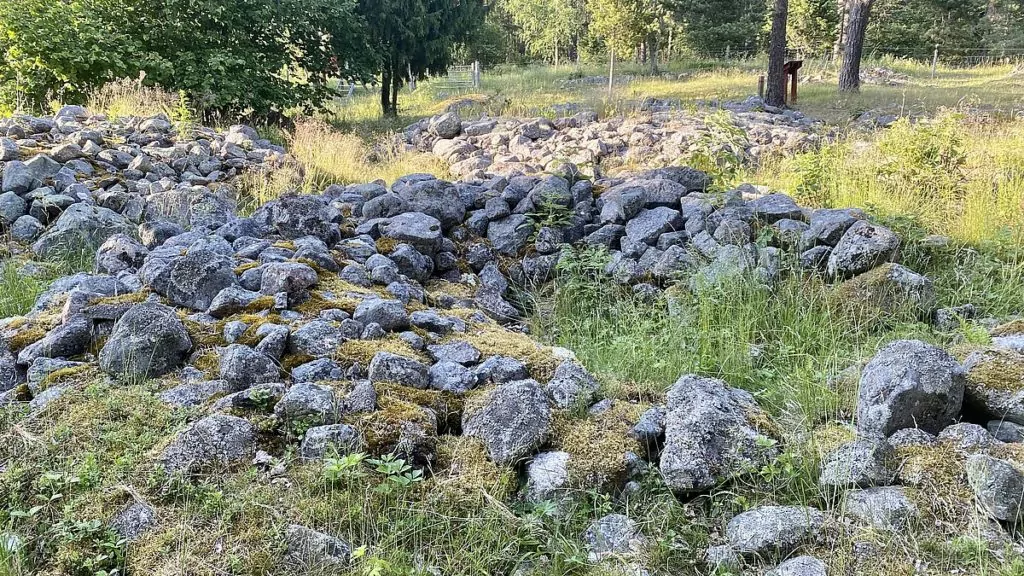
18. Bråfors bergmansby
- Norberg municipality, Västmanland county, Västmanland.
- Farm environment (Bergman farm) and agricultural landscape
Bråfors is one of the country's oldest mining villages. Iron was produced in the smelter and agriculture was practised on the farm.
19. Linnaeus' Hammarby
- Uppsala Municipality, Uppsala County, Uppland
- Farm environment and agricultural landscape
Linnaeus' Hammarby is one of Sweden's most stylishly preserved 18th century farms. It was bought by Carl Linnaeus in 1758 as a refuge from Uppsala's unhealthy environment and is located 15 kilometres southeast of Uppsala.
20. the Brattforshet wartime airfield.
- Karlstad municipality, Värmland county, Värmland
- Defence environment
Brattforsheden wartime airfield is located one kilometre east of Molkom in Värmland County. On 9 June 1939, the government granted the first 20 small airfields, which eventually became 40. Today one remains, which is Krigsflygfält 16 Brattforshedens.
21. gäddeholm
- Municipality of Västerås, County of Västmanland, Västmanland
- Manor house environment and agricultural landscape with industrial environment (mill and mine environment)
This cultural reserve in Sweden has a park, garden, buildings and surrounding land characterised by agriculture and brickworks.
22. Old Pershyttan's mining village
- Nora Municipality, Örebro County, Västmanland
- Industrial environment (industrial and mining environment)
Gamla Pershyttan is a well-preserved mining village where people mined ore and made iron from the 14th century until modern times.
23) Brottö
- Municipality of Österåker, Stockholm County, Uppland.
- Farm environment and agricultural landscape
Here you can walk up from the steamboat pier through a rich archipelago landscape with fields, meadows, oaks, overgrown gardens and interesting buildings.
24. Igelbäcken
- City of Stockholm, Stockholm County, Uppland
- Urbanised agricultural landscape and recreational area
Igelbäcken is an approximately 10.5 km long watercourse in northern Stockholm that connects Säbysjön in Järfälla with the Edsviken bay at Ulriksdal Castle in Solna, passing through the Igelbäcken nature reserve.
25. Dalarö shipwreck site
- Haninge Municipality, Stockholm County, Södermanland
- Marine archaeological environment (shipwrecks)
In 2014, the waters off Dalarö were named the Dalarö Shipwreck Area and became Sweden's first marine cultural reserve. For 800 years, this has been one of the most important maritime trade routes to Stockholm.
26. Karlslund Mansion
- Örebro municipality, Örebro county, Närke
- Urban mansion environment with park and garden
Karlslund was built in the 16th century by Duke Karl, Duke of Närke and Södermanland, later Karl IX. Karlslund Manor is a well-preserved central Swedish manor environment with buildings, garden and park.
27. summer rose
- Örebro municipality, Örebro county, Närke
- Urban farm environment (farmhouse) with park.
In the Sommarro Swedish Cultural Reserve you can enjoy both beautiful nature and exciting cultural remains in a deciduous landscape.
28. Lower Söderby
- Salem Municipality, Stockholm County, Södermanland
- Farm environment and agricultural landscape
The houses consist of a knotted timbered semi-detached cottage and an outbuilding wing containing a loft and a farmhouse. The buildings were probably built in the 18th century.
29. Åsnebyn
- Municipality of Mellerud, County of Västra Götaland, Dalsland
- Farm environment and agricultural landscape
A typical Dalmatian farm, with a landscape characterised by the 19th and early 20th century. In Åsnebyn you can experience what old-fashioned farming in Dalarna looked like. The farm is first mentioned in a document from 1380.
30. Vallby Sörgården
- Skövde municipality, Västra Götaland county, Västergötland, Sweden
- Farm environment and agricultural landscape
Skaraborg's only cultural reserve. There are eight buildings at Vallby Sörgården, including a two-storey mansion from 1826, two farm buildings, a stone cellar, a barn, a sheepfold and a smithy.
31st Island
- Municipality of Linköping, County of Östergötland, Östergötland
- Farm environment and agricultural landscape
The village's farms are located on a headland next to Stensjön and consist of small timbered cottages, first mentioned in 1736.
32. Gräfsnäs Castle Park
- Alingsås Municipality, Västra Götaland County, Västergötland, Sweden
- Castle ruin, park and recreational area
Gräfsnäs castle ruin and park is one of the municipality's biggest tourist destinations. The castle is surrounded by a castle park with several different noble deciduous trees such as oak and ash, red oak, maple and lime.
33. Smedstorp double farm
- Ydre municipality, Östergötland county, Östergötland.
- Farm environment and agricultural landscape
Smedstorp's double farmhouse and landscape have retained their character since the 18th century. The farm's small, timber-grey buildings give a vivid picture of how the farmer's life was during the time of self-sufficiency in Sweden.
34. The village of Åsen
- Aneby Municipality, Jönköping County, Småland, Sweden
- Farm environment and agricultural landscape
Here you can wander around on your own or take part in various activities. You will experience 1900 with agriculture, horse power, working with the animals, bread baking and washing in the brewhouse.
35. Gunnebo Castle and Gardens
- Mölndal Municipality, Västra Götaland County, Västergötland, Sweden.
- Castle environment with gardens and landscape park
Gunnebo Castle and Gardens was built in the 18th century as a summer resort for the successful merchant John Hall and his family. Today the castle is owned by the municipality of Mölndal and the area is open to the public.
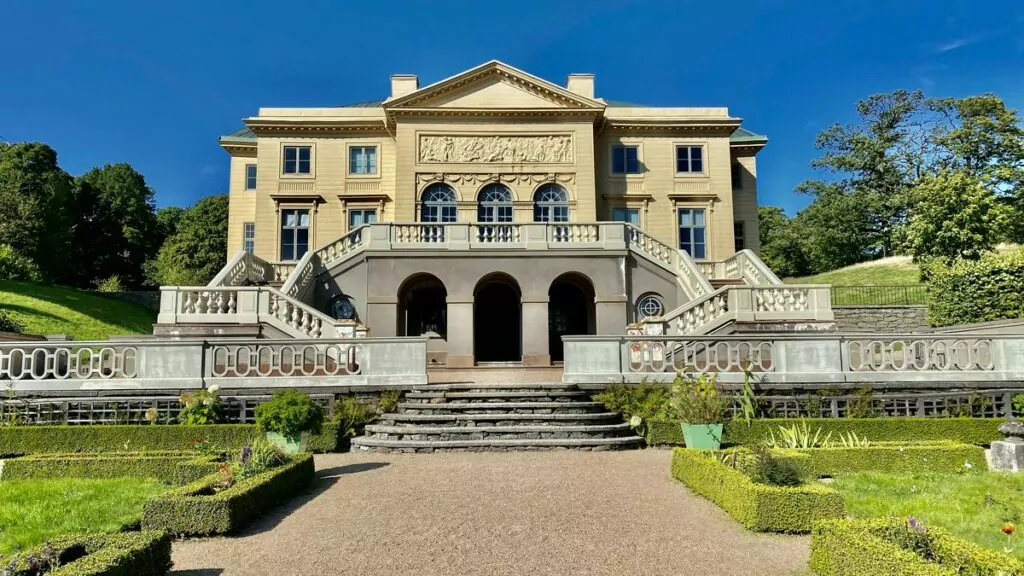
36. Ramsholmen's agricultural landscape
- Marks Municipality, Västra Götaland County, Västergötland, Sweden
- Fossilised agricultural landscape
The area contains several different environmental and nature types, mostly sparse deciduous forest and open land, and includes the existing farm Ramsholmen and remnants of the former Hult Nedergården and Skallared.
37. Äskhult farm
- Kungsbacka municipality, Halland county, Halland, Sweden.
- Farm environment and agricultural landscape
The village now has no residents left and is preserved in a historical condition. It consists of four farms and was parcelled out in such a way that the houses did not have to be moved.
38. The marten farm
- Kungsbacka municipality, Halland county, Halland, Sweden.
- Farm environment (captain's residence) and agricultural landscape
The Mårtagården cultural reserve on the Onsala peninsula consists of the two captain's houses Mårtagården and Apelhögen.
39. Norrbys in Väte
- Gotland County, Gotland
- Farm environment and agricultural landscape
The farm dates from 1936 and is completely intact with Gotland's oldest watermill.
40. Högarp village
- Vetlanda Municipality, Jönköping County, Småland, Sweden
- Farm environment and agricultural landscape
Dating back to the 15th century, the village consists of five farms, one of which is in active use, old fields with boulders, cultivation terraces and cairns lined with stone walls and fences.
41. Linnaeus Råshult
- Älmhult Municipality, Kronoberg County, Småland, Sweden
- Farm environment and agricultural landscape
Råshult Södregård is the vicarage between Diö and Älmhult, where Carl Linnaeus was born on 23 May 1707. Here you can experience a genuine cultural landscape from the 18th century.
42. The Bollalt Building
- Laholm municipality, Halland county, Halland, Sweden
- Farm environment and agricultural landscape
In the centre of the Bollaltebygget cultural reserve is an unusually well-preserved older four-tiered farmhouse with roots in the 17th century.
43. Örnarnäs
- Osby municipality, Skåne county, Skåne
- Farm environment and agricultural landscape
Old-fashioned agriculture remains here and is preserved to understand what happened in Örnanäs in 1584, then called Ørnes. It was originally a solitary farm, which was destroyed by fire by Swedish troops in April 1678 during the Scanian War and later rebuilt.
44. Ronneby Brunnspark
- Ronneby municipality, Blekinge county, Blekinge
- Fountain park and farmland
It dates back to 1705 and in the late 1870s was Sweden's most visited health centre. Brunnsparken has won many awards for its fantastic park.
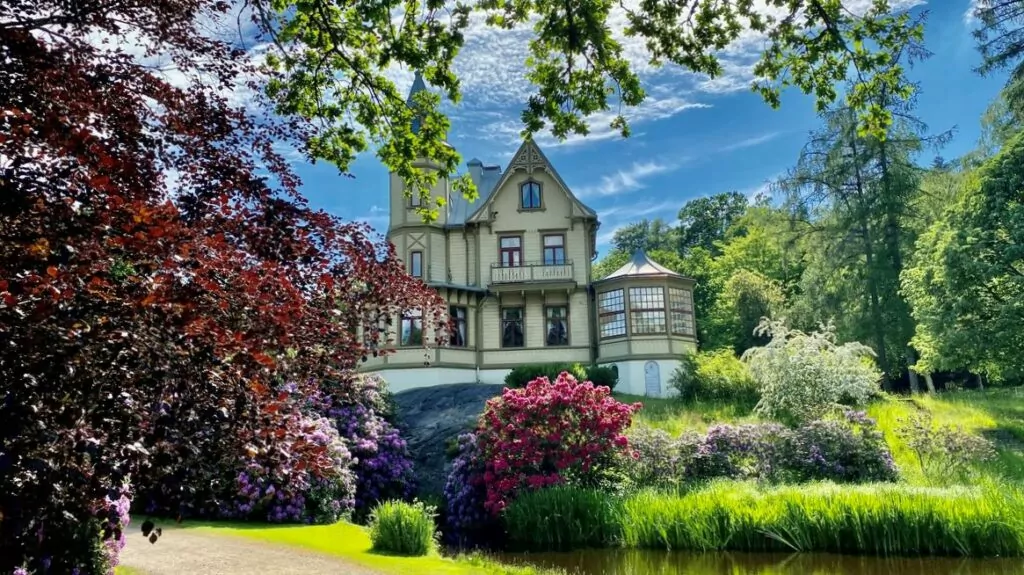
45. Stensjö village
- Oskarshamn Municipality, Kalmar County, Småland, Sweden
- Farm environment and agricultural landscape
Stensjö is a village and a cultural reserve in the parish of Döderhult, consisting of some 30 culturally valuable buildings in an original cultural landscape by Lake Stärringen.
Have you visited any cultural reserves in Sweden?
Have you visited any of these Swedish cultural reserves? What can you tell us about the ones you have visited?
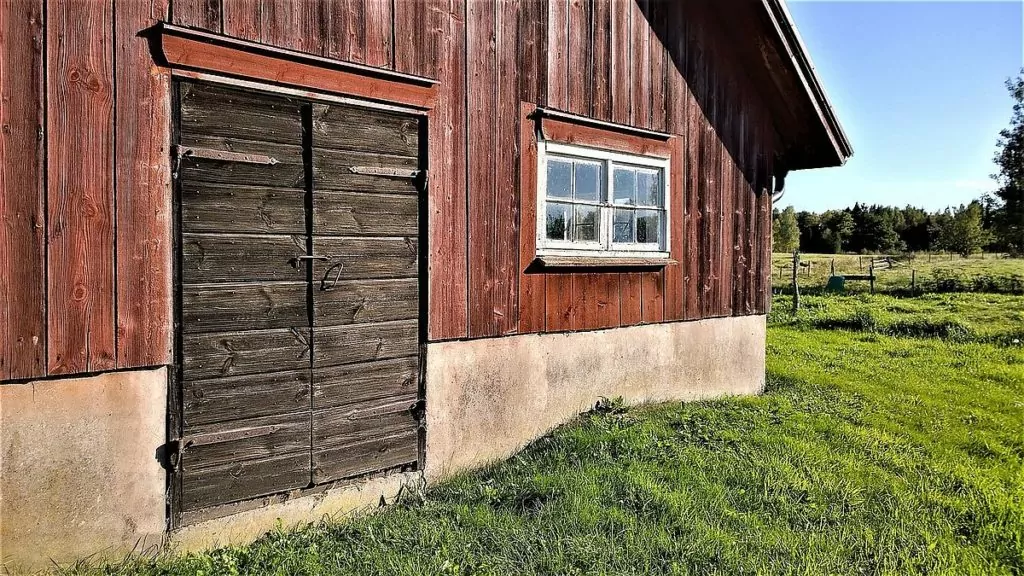


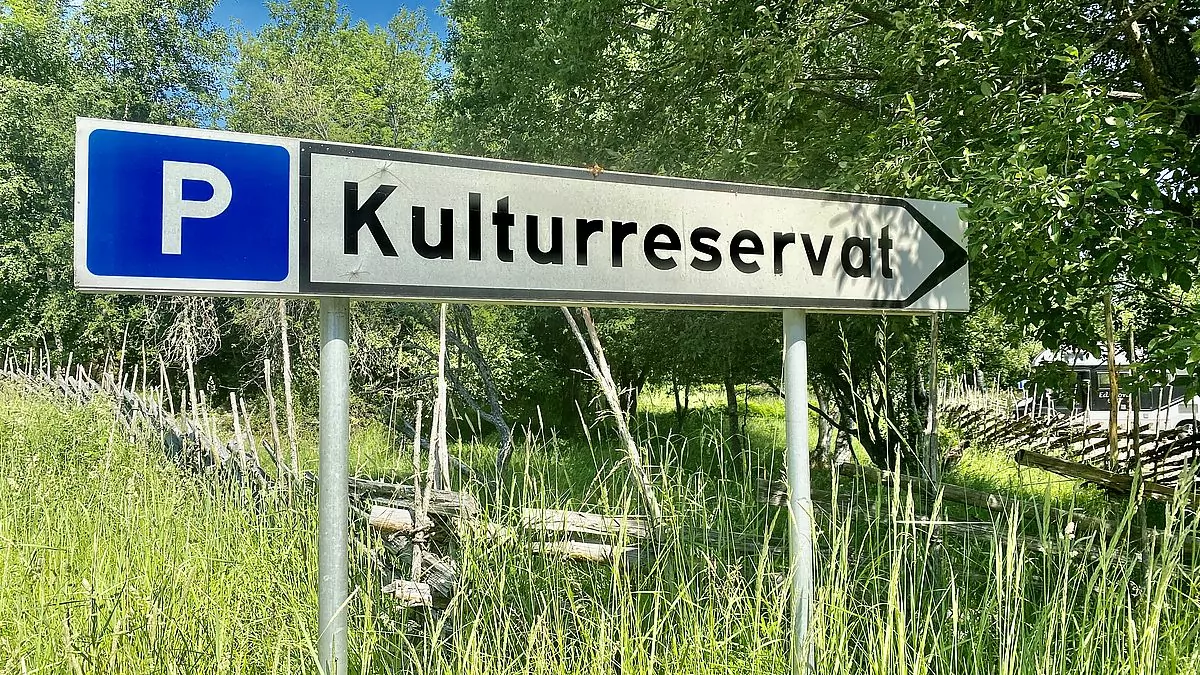






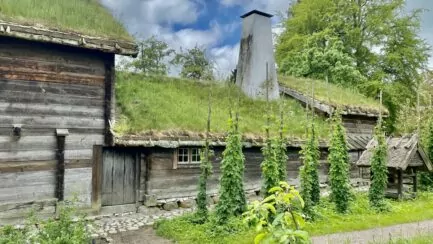
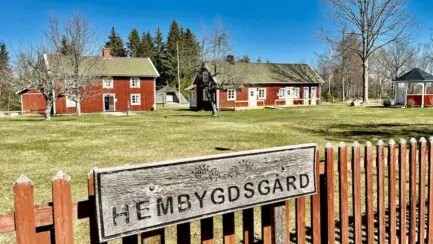

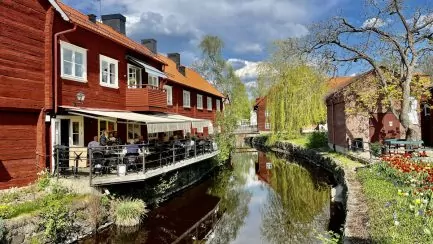
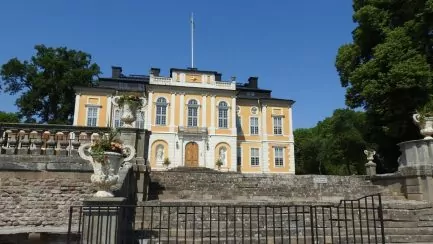
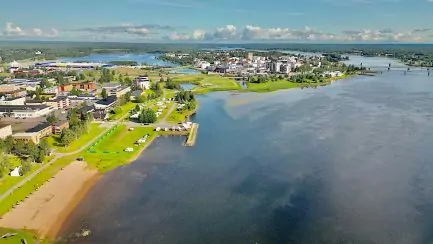



Lena in Wales says:
Interesting to see all these cultural reserves I didn't know about.
Some I have visited, Linnaeus Hammarby and Linnaeus Råshult,
I have visited Gunnebo many times, both the park and the castle. We cooperated with them when I worked at Nääs Slott and one of my sons lives nearby.
I have not heard of Äskhult's farm, but I have visited Äskhulta village a few times, very nice.
Unfortunately, I think a typo has occurred. I think you mean Gräfsnäs in Alingsås municipality, not Grafsnäs. Nice castle ruin and park. Been there many, many times. My old neighbourhood.
Take care!
01 July 2020 - 11:03
Helena says:
Glad you visited several of these! And yes, it should say Gräfsnäs! I have corrected it now! It is so good with blog readers who see these small errors so I get the chance to correct them, thank you!
01 July 2020 - 12:03
Lena in Wales says:
It is when you see places you know so well that you react.
01 July 2020 - 13:33
Ama de casa says:
So... I have no idea about cultural reserves. Have not visited any of them, or maybe one? Yes, if Igelbäcken is the one that runs through Järvafältet... 🙂 🙂
01 July 2020 - 11:08
Helena says:
I'm not sure about the borders of the actual cultural reserve, but it may be true as you say. It's in that neighbourhood anyway 🙂 .
01 July 2020 - 12:07
Christina Löfgren says:
Hello!
How nice that we have so much cultural heritage, I didn't realise that.
We have been to several of them and all are interesting in their own way. But I would highly recommend Vallby Sörgården, which is in my home area.
https://www.vastsverige.com/skovde/produkter/vallby-sorgarden/?u=505
Have a nice day!
Christina
01 July 2020 - 11:39
Helena says:
Great! Thanks for the tip and the link! 🙂
01 July 2020 - 12:07
Anki says:
I love cultural reserves and we visit some quite regularly - Öna, Smedstorp's double farm and Åsens village are the ones we like to return to 🙂.
Have been to Fatomakke church town, Axmars bruk and a fine farm in northern Värmland, but I do not remember what it was called ... maybe it was Juhola. We have also been to Karlslund manor and Gamla Pershyttan 🙂.
Thanks for further tips 🙂
01 July 2020 - 13:08
diana's dreams says:
Not yet visited one of them unfortunately hugs
01 July 2020 - 17:16
bmlarstravellingblog says:
It's amazing what you can learn from blogs. We didn't even know there was such a thing as a cultural reserve. Vallby Sörgården is only a few kilometres away, but I've never heard of it...
The ones we visited are Gräfsnäs and Fatmomakke.
There are plenty of places to visit!
01 July 2020 - 18:04
Ditte says:
I have visited quite a few of them over the years, but not all of them were cultural reserves at the time, but came to be. I am least familiar with Skåne. Since I work a lot with travelling in Sweden during more normal times, there is often a stop if there is a culture reserve on the way or in the vicinity of where we are going.
Sweden has so much to offer, and it's especially nice in the summer to get around - and preferably in beautiful weather.
01 July 2020 - 22:39
Lena - good for the soul says:
Well, Linnaeus' Hammarby is apparently one of the country's cultural reserves. I grew up quite close and have visited Hammarby several times. Really nice (it was then anyway 🙂 ).
Hug Lena
02 July 2020 - 16:29